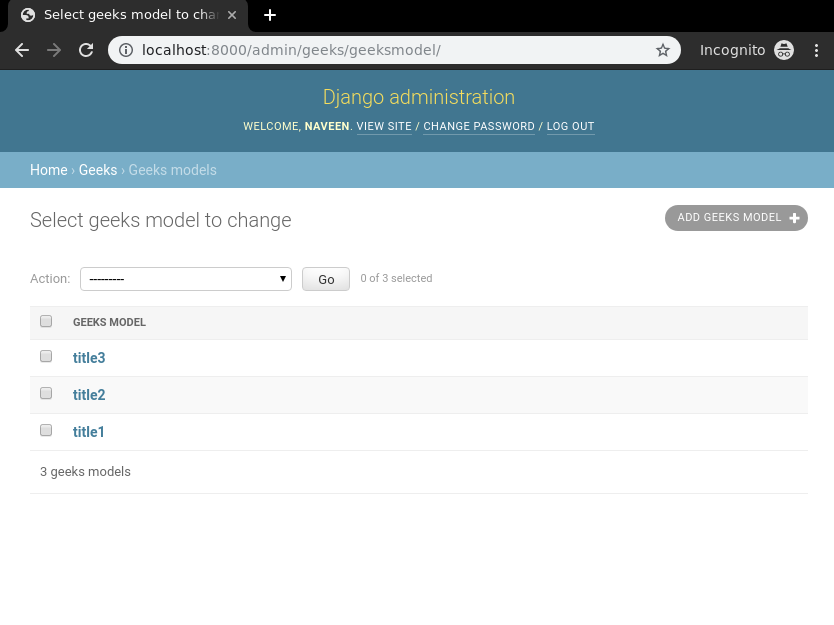DeleteView Class Based Views Django (original) (raw)
Last Updated : 28 Apr, 2025
Delete View refers to a view (logic) to delete a particular instance of a table from the database. It is used to delete entries in the database for example, deleting an article at geeksforgeeks. We have already discussed basics of Delete View in Delete View – Function based Views Django. Class-based views provide an alternative way to implement views as Python objects instead of functions. They do not replace function-based views, but have certain differences and advantages when compared to function-based views:
- Organization of code related to specific HTTP methods (GET, POST, etc.) can be addressed by separate methods instead of conditional branching.
- Object oriented techniques such as mixins (multiple inheritance) can be used to factor code into reusable components.
Class based views are simpler and efficient to manage than function-based views. A function based view with tons of lines of code can be converted into a class based views with few lines only. This is where Object Oriented Programming comes into impact.
Django DeleteView - Class Based Views
Illustration of How to create and use DeleteView using an Example. Consider a project named geeksforgeeks having an app named geeks.
Refer to the following articles to check how to create a project and an app in Django.
After you have a project and an app, let's create a model of which we will be creating instances through our view. In geeks/models.py,
Python3 `
import the standard Django Model
from built-in library
from django.db import models
declare a new model with a name "GeeksModel"
class GeeksModel(models.Model):
# fields of the model
title = models.CharField(max_length = 200)
description = models.TextField()
# renames the instances of the model
# with their title name
def __str__(self):
return self.title`
After creating this model, we need to run two commands in order to create Database for the same.
Python manage.py makemigrations Python manage.py migrate
Now let's create some instances of this model using shell, run form bash,
Python manage.py shell
Enter following commands
from geeks.models import GeeksModel GeeksModel.objects.create( title="title1", description="description1").save() GeeksModel.objects.create( title="title2", description="description2").save() GeeksModel.objects.create( title="title2", description="description2").save()
Now we have everything ready for back end. Verify that instances have been created from http://localhost:8000/admin/geeks/geeksmodel/

Class Based Views automatically setup everything from A to Z. One just needs to specify which model to create DeleteView for, then Class based DeleteView will automatically try to find a template in app_name/modelname_confirm_delete.html. In our case it is geeks/templates/geeks/geeksmodel_confirm_delete.html. Let's create our class based view. In geeks/views.py,
Python3 `
import generic UpdateView
from django.views.generic.edit import DeleteView
Relative import of GeeksModel
from .models import GeeksModel
class GeeksDeleteView(DeleteView): # specify the model you want to use model = GeeksModel
# can specify success url
# url to redirect after successfully
# deleting object
success_url ="/"
template_name = "geeks/geeksmodel_confirm_delete.html"`
Now create a url path to map the view. In geeks/urls.py,
Python3 `
from django.urls import path
importing views from views..py
from .views import GeeksDeleteView urlpatterns = [ # is identification for id field, # slug can also be used path('/delete/', GeeksDeleteView.as_view()), ]
`
Create a template in templates/geeks/geeksmodel_confirm_delete.html,
html `
{% csrf_token %}Are you sure you want to delete "{{ object }}"?
<input type="submit" value="Confirm">`
Let's check what is there on http://localhost:8000/1/delete

Tap confirm and object will redirect to success_url defined in the view. Let's check if title1 is deleted from database.
